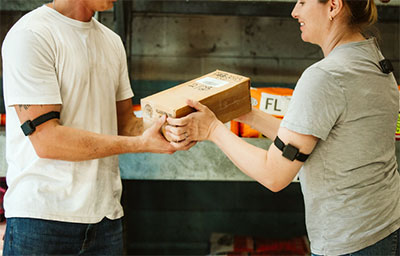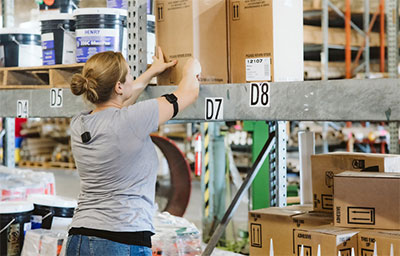Why Injury Prevention Technology Used by Athletes is so Effective in the Workplace

With the proper safety parameters, physical jobs can be healthy. Most labor workers have above-average cardiovascular health. However, they also have higher musculoskeletal injury rates.
What if we could reduce injury rates and maintain the benefits of active work? This balance has been possible in sports medicine for years.
Unfortunately, research has indicated that most workplace injury prevention programs are ineffective at reducing injury risks. These programs often fail to personalize alerts and coach workers to optimize their specific job task movements. Countless variables are critical but often ignored.
Sports technology is highly personalized. Elite athletes leverage wearable tech, review their movement analytics, and receive alerts that lower their injury risk and improve performance.
When we bring advanced sports technology into the workplace, we can individualize at-scale in real time.
Bringing Sports-Science Wearables into the Workplace
In the same way Formula 1 drives everyday automotive innovations, the goal of keeping high-salaried professional athletes in their sport has steered wearable technology innovation.
“Technology to prevent injuries and optimize movement started in elite sports arenas over a decade ago,” said Dorothy Riviere, chief clinical officer at Bardavon. “Employers can use those advances, now adapted to the prevention industry, to protect their athletes – the industrial athletes.”
The reliability of wearable accelerometers to collect movement data over long periods has progressed significantly. Access to this data is positively correlated with identifying injury risk metrics – including fatigue thresholds, movement control and muscle soreness. These are all precious data points for our workers.
The Benefits of Sports-Science Wearables for Workers
 Through wearable accelerometers in sports and the workplace, it’s possible to assess injury risks over long periods.
Through wearable accelerometers in sports and the workplace, it’s possible to assess injury risks over long periods.
Wearable technology helps prevent sports injuries by tracking and identifying when an athlete is at risk of overload during a training period. Likewise, it measures the load on groups of workers to establish benchmarks relevant to their tasks.
Research has indicated that there is limited reliability for observation and opinion-based, task safety assessments between safety pros.
Wearable technology removes subjectivity and enables a worker’s movements to be assessed over time. If we rely on human observation alone, this consistent and accurate tracking would be impossible in a busy workplace.
How to Get Buy-In for Sports Technology in the Workplace
For any injury prevention program to be successful, it must address the needs of the two main stakeholders: the worker and the safety pro. Implementing a sports-inspired injury prevention program in the workplace will need to engage both in a few key ways:
The worker
Treat workers like industrial athletes. Value workers like their sporting heroes to show how much their health and well-being matter.

Engage workers in real time. Wearable technology that alerts workers of “high load” movements during job tasks communicates exactly what movements need to change.
Provide strategic, bite-sized training. Training content should be delivered in small modules periodically throughout the year rather than during single, one-hour classroom-style presentations.
The safety pro
Keep data collection simple. The safety pro can use a simple process, placing sensors on a worker while taking a smartphone video of a job task. The two are automatically combined in a simple platform.
Make data easy to review. Workplace injury prevention data needs to be displayed in an easy-to-use format, enabling safety pros to see where the risks are and on what they need to prioritize their time.
Explore Sports Tech in the Workplace
A sports science-backed workplace injury prevention is proven to reduce the risk of musculoskeletal injuries in the workplace. Bardavon’s Injury Prevention Suite has taken the best sport-based injury prevention methods to build a complete, tech-backed product line that is engaging and works.
Learn more today at Bardavon.com.
Post a comment to this article
Safety+Health welcomes comments that promote respectful dialogue. Please stay on topic. Comments that contain personal attacks, profanity or abusive language – or those aggressively promoting products or services – will be removed. We reserve the right to determine which comments violate our comment policy. (Anonymous comments are welcome; merely skip the “name” field in the comment box. An email address is required but will not be included with your comment.)


